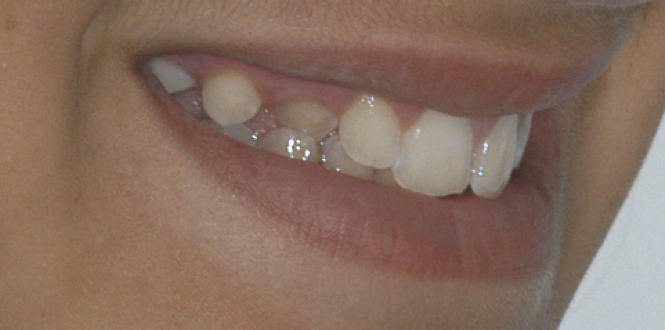Do you have a “small” tusk? Maybe it is still a baby tooth. The frequency of impacted upper canines is between 0.92% – 3.58%, being slightly more common if you are a girl. Most of the included canines (85%) are “dormant” in the roof of the mouth.

If you suspect that you have a tusk that has not come out I recommend that you read the previous article where I talked about how to diagnose the existence of an impacted canine.
Most often these canines are in a favourable position to be placed in their place in the arch. Once we have located exactly where it is with a dental CAT scan and we have planned the route by which we are going to lower it, we will start by aligning the rest of the neighbouring teeth because we are going to use them as anchors and we will rely on them to lower it, and we will also have to make room for the crossed canine.
Afterwards, you will consult with the periodontist or oral surgeon who will assess with the examination and the CAT scan the best approach to reach it and discover its crown.
Once the intervention is well planned, the palate is uncovered to reach the impacted canine and in the same surgery an orthodontic button is “glued” with a chain that will be used to pull it out later. Generally we leave the baby tooth, if you have one, so that no gap is visible when you smile until the permanent tooth is closer to its place between the teeth. This way you don’t have an “indentation” when you smile.
We continue with the orthodontic treatment until the tooth is perfectly positioned in the mouth and functioning correctly. We not only take care to bring the crown but also that the root is straightened into place so that the aesthetics and stability are exceptional.

If you would like to make a free consultation to find out if you have a tusk inside the palate or not and what is the best treatment for your case, you can make a free appointment at 952 77 77 47



